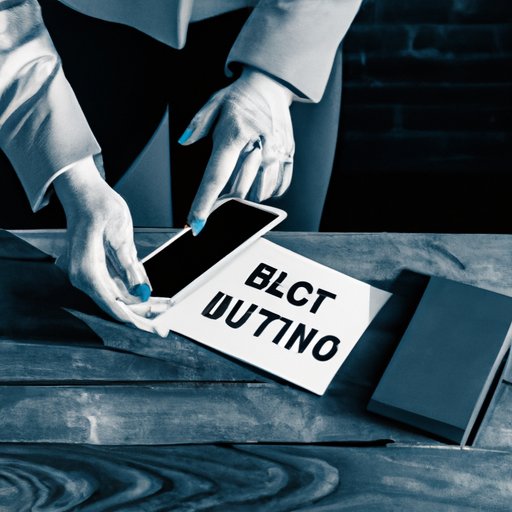Introduction
Culture is a broad term that refers to the shared values, beliefs, and customs of a particular group of people. Consumer behavior, on the other hand, is the study of how individuals, groups, and organizations make decisions about what products and services to buy, use, or reject. This article will explore how culture can influence consumer behavior.
Analyzing the Impact of Cultural Values on Consumer Behavior
Cultural values play an important role in shaping consumer behavior. These values refer to the beliefs and attitudes that a particular culture holds about various aspects of life. These values are often reflected in the ways that people shop and consume. For example, some cultures may place a greater emphasis on quality over quantity when it comes to purchasing decisions, while others may prioritize convenience and affordability.
For instance, in an American context, people may be more likely to purchase items that are perceived as being of higher quality, even if they come with a higher price tag. On the other hand, in a Chinese context, people may be more likely to prioritize value for money, meaning that they may be willing to sacrifice some quality in exchange for a lower price.
Examining Cross-Cultural Differences in Shopping Habits
It is also important to consider the differences between cultures when examining how culture affects consumer behavior. Different cultures have different approaches to shopping, which can be attributed to a variety of factors, such as geographic location, economic status, and level of technological advancement. For example, people in rural areas may have fewer options for shopping than those in urban areas, and this can affect their buying habits.
In addition, economic status can also play a role in how people shop. People who are in a lower socioeconomic class may be more likely to prioritize affordability and practicality when making purchases, while those in higher socioeconomic classes may be more likely to prioritize luxury and quality. Finally, technological advancement can also affect the way people shop, as those with access to the internet and mobile devices may be more likely to utilize online shopping and take advantage of deals and discounts.

Exploring the Role of Religion in Purchase Decisions
Religion can also have an impact on consumer behavior. Different religions have different views on certain aspects of life, such as consumption and materialism, which can influence the way people shop. For example, some religions may place a greater emphasis on minimalism and frugality, while others may encourage indulgence and extravagance. Additionally, religious holidays and celebrations may also affect the types of products and services that people choose to purchase.
For instance, during the Islamic holy month of Ramadan, Muslims may be more likely to purchase food and clothing that adheres to halal standards. Similarly, during the Christian holiday of Christmas, people may be more likely to purchase gifts and decorations related to the season. Knowing how religious beliefs shape consumer behavior can help businesses better understand their target audiences and tailor their marketing strategies accordingly.
Investigating the Influence of Language on Brand Choices
Language can also influence consumer behavior. The language a person speaks can shape the way they perceive certain brands and products. For example, some words or phrases may have a positive connotation in one language but a negative connotation in another. Additionally, the language used in advertising can also affect the way people view a product or brand.
For instance, a product advertised in English may be viewed differently than a product advertised in Spanish. Thus, it is important for businesses to consider the language of their target audience when designing their advertising campaigns and crafting their messaging. Doing so can help them better connect with their customers and increase their chances of making a sale.
Understanding the Influence of Social Norms on Consumption
Social norms can also affect consumer behavior. These norms refer to the expectations and accepted behaviors of a particular society. They can range from the acceptable age for purchasing certain products to the type of clothing that is deemed appropriate for certain occasions. For example, in some cultures, it may be unacceptable for women to wear revealing clothing in public, while in others, it may be considered fashionable.
Thus, it is important for businesses to be aware of the social norms of their target audience when designing their marketing campaigns. Failing to do so could lead to a misinterpretation of their message and a negative reaction from their customers. By understanding the social norms of their target demographic, businesses can ensure that their messages are well-received and that their products and services are seen in a positive light.

Examining the Role of Subcultures in Shaping Consumer Preferences
Subcultures can also have an impact on consumer behavior. These are smaller groups within a larger culture that share similar values and beliefs. Subcultures can be based on a variety of factors, such as age, gender, ethnicity, and occupation. For example, young people may be more likely to purchase certain products or brands than older people, and members of the LGBTQ+ community may have different purchasing habits than heterosexuals.
Thus, it is important for businesses to consider the subcultures of their target audience when designing their marketing campaigns. Doing so can help them create campaigns that resonate with their customers and increase the likelihood of making a sale.

Investigating the Impact of Technology on Buying Behaviors
Finally, it is important to consider the impact of technology on consumer behavior. Technology has changed the way people shop, as more and more people are utilizing online shopping platforms and taking advantage of deals and discounts offered by retailers. Technology has also enabled businesses to reach a wider audience, as they can now advertise their products and services on a global scale.
Additionally, technology has also made it easier for businesses to collect data on their customers, which can be used to tailor their marketing campaigns and create personalized experiences for their customers. By utilizing technology, businesses can ensure that their campaigns are more effective and that they are reaching the right people.
Conclusion
In conclusion, culture can have a significant impact on consumer behavior. Cultural values, cross-cultural differences, religious beliefs, language, social norms, subcultures, and technology can all shape the way people shop and consume. It is important for businesses to consider these factors when designing their marketing campaigns in order to ensure that their messages are well-received and their products are seen in a positive light.
Further research is needed to better understand how culture influences consumer behavior and how businesses can best capitalize on this knowledge. By doing so, businesses can gain a deeper understanding of their target audience and create campaigns that resonate with their customers.
(Note: Is this article not meeting your expectations? Do you have knowledge or insights to share? Unlock new opportunities and expand your reach by joining our authors team. Click Registration to join us and share your expertise with our readers.)
